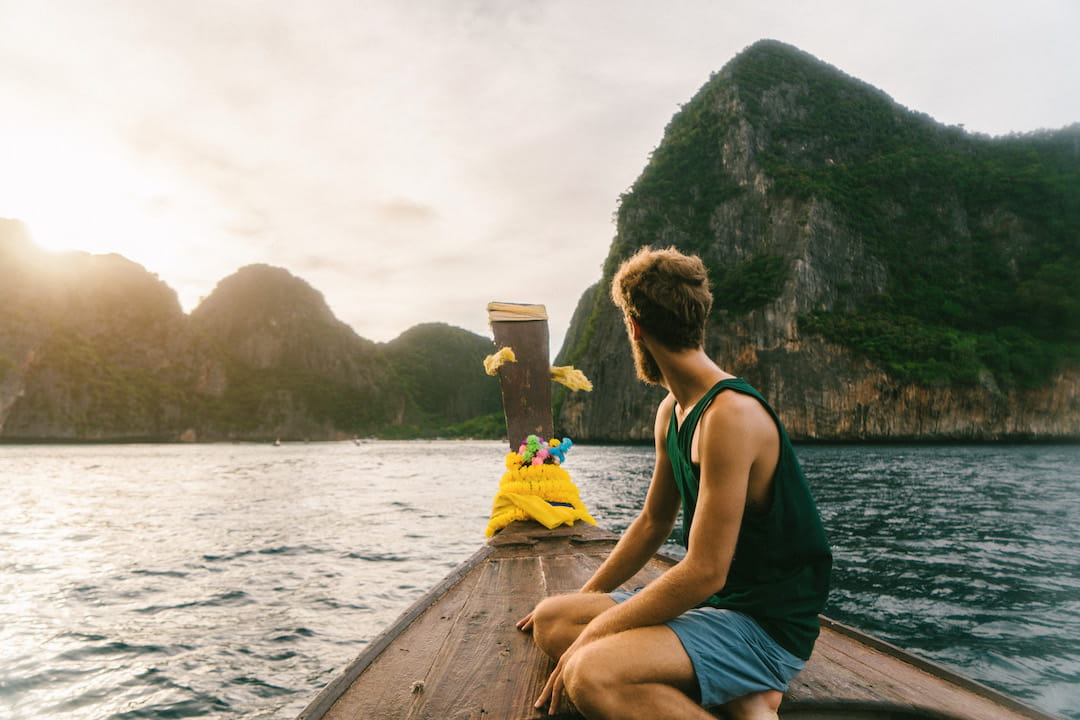Climbing the summit of Mount Kilimanjaro is a feat not so easily accomplished. At 5,895 metres or 19,341 feet, the highest free-standing mountain in the world (and the tallest peak in Africa) is an extreme altitude hike that takes a certain level of training, endurance and fitness – not to mention specific gear and clothing to reach to the top.
Even if you’re not one for extreme experiences, visiting the mountain and possibly even conquering its summit is an unforgettable, once in a lifetime adventure. The epic and scenic journey is just as staggering as the views you’re rewarded with at the very top.
Before you start planning your trip, here’s everything you need to know about a Mount Kilimanjaro trekking tour.
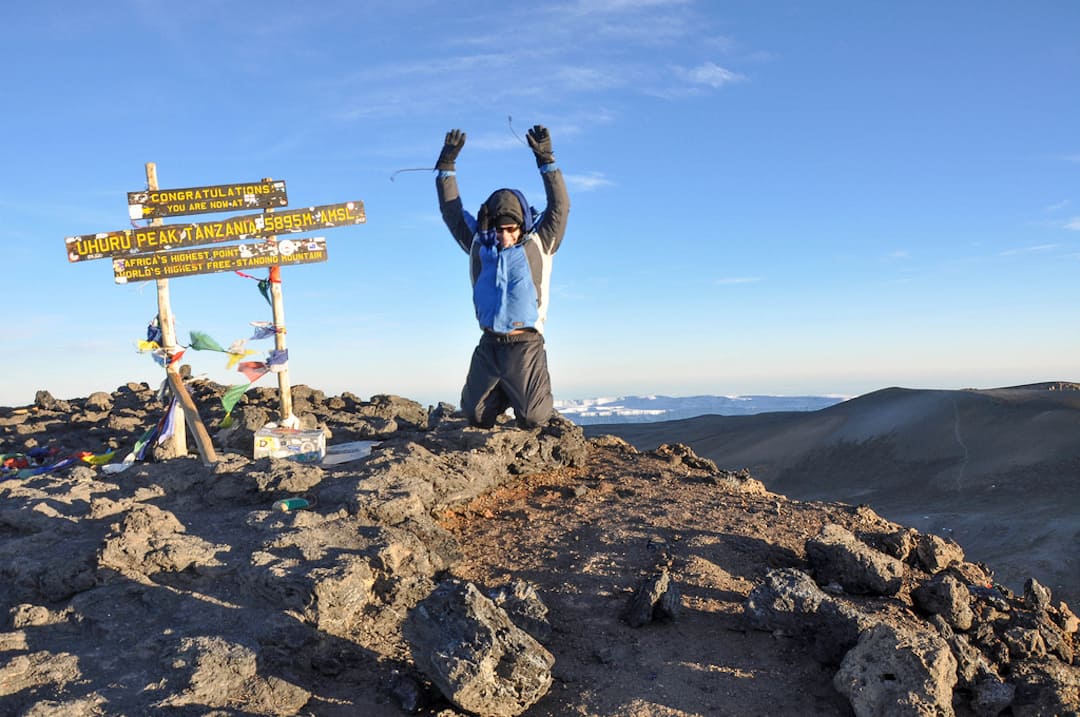
The Kilimanjaro trails
Any hike or trek starts, of course, with the trails, of which Mount Kilimanjaro has eight. Each one is distinctive in length, access, difficulty, landscape and even foot traffic. Out of the eight, there is just one (the Mweka route) that is intended only for descents, so we’ll focus on the other seven.
- Marangu: The most popular and crowded route, this 64-kilometre trek, which takes five to six days, starts at Marangu Gate in the southeast and travels up to Uhuru. It might not be the most scenic trail, but it does pass by moorland, forests, waterfalls and glaciers as well as crossing the Saddle (the semi-desert patch that separates Mawenzi from Kibo).
- Machame: Starting in the south at Machame Gate then travelling on the mountain, even rising at up to 4,645 metres, before making it to the peak, Machame is Kilimanjaro’s second most popular circuit. The whole, 49-kilometre scenic trek takes six or seven days and boasts a diversity in landscapes.
- Northern Circuit: Kilimanjaro’s newest addition to its trails is also one of its best, even better and more scenic than Marangu. It’s also the longest at 90 kilometres, which takes nine days, and one of its hardest. It traces the western section of the Lemosho route up to Moir Hut and then making a semi-circle in the north before going back down along the Mweka trail.
- Lemosho: Beautiful Lemosho, which passes through the stunning unspoilt land, begins in the west and travels for 56 kilometres before exiting through Mweka in the south. Depending on the trip itself, Lemosho treks can go anywhere from six to eight days, passing verdant forests, ridges and valleys. Travelling in a similar direction as the Shira route from the western base, climbers are likely to encounter lower traffic until the route meets with the Machame Route and is one of the newer routes on the mountain which makes Lemosho a great choice for your climb.
- Shira: If you’re an accomplished hiker or trekker and looking to make this year one to remember; a hike to Kilimanjaro along the Shira route should fulfil your adventurous desires. The Shira route starts at 3,600 meters and is therefore not ideal for trekkers who have minimal experience with high altitude trekking. For this very reason, most travellers will opt for the Lemosho route as it’s very similar.
- Rongai: The 65-kilometre remote Rongai is one of Kilimanjaro’s easier hikes and takes five to six days to complete. Like the Northern Circuit, it sees light foot traffic. It also passes through mostly untrammelled land and is more scenic than the popular Marangu. The most important thing to note with the Rongai route is that it is flatter than the other Kilimanjaro routes and does not offer trekkers good options to climb high and sleep low. Hikers generally suffer more from altitude sickness on the Rongai route compared to other routes and an additional acclimatisation day is recommended.
- Umbwe: While 37-kilometre Umbwe might be the shortest circuit, it’s also the most difficult and only recommended for the most experienced of trekkers. Rewards, however, include spectacular views on ridges and simply the experience of tackling such a challenge. Aside from the physically taxing journey, the scenery is the ultimate reward. Your eyes will be treated to jaw-dropping views along each stage of the journey. As for the route itself, Umbwe starts from the southern part of Kilimanjaro and presents trekkers with a steep climb and travels below the Southern Ice Field before eventually summiting from Barafu.
| Mount Kilimanjaro | |
|---|---|
| Height | 5,895 meters |
| Country | Tanzania |
| Routes | Machame Route, Lemosho Route, Marangu Route, Rongai Route, Shira Route, Umbwe Route |
| Nearest Airport | Kilimanjaro International Airport |
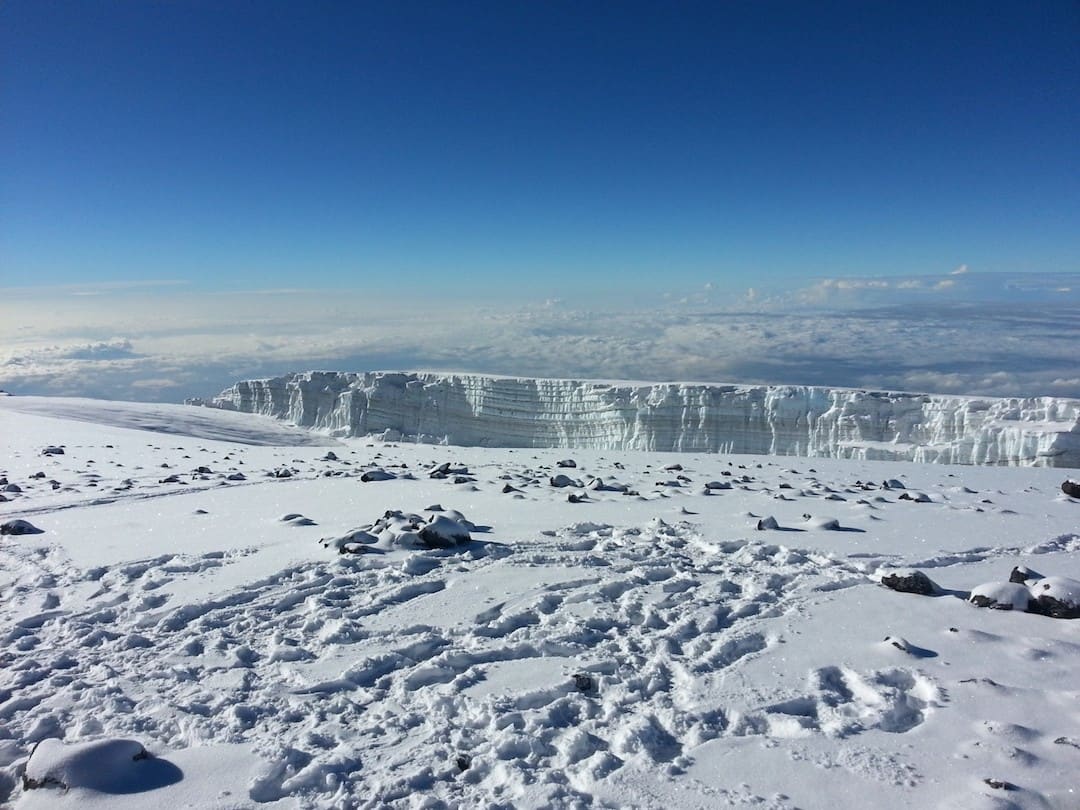
Best time to visit Mount Kilimanjaro
Kilimanjaro’s wet seasons, which span March through June and November, are perhaps the most hazardous months to be trekking the mountain. Due to risky conditions, only a few trekking operators offer trips and only the most experienced trekkers should take on the challenge.
The best time to go on a Kilimanjaro hike is the dry season, from August through October, when the climate is dry with pleasant days and chilly nights. It is, however, also the busiest so if crowds repel you, December through February are your next best option. These months are characterised by warmer days and moderate chances of rain.
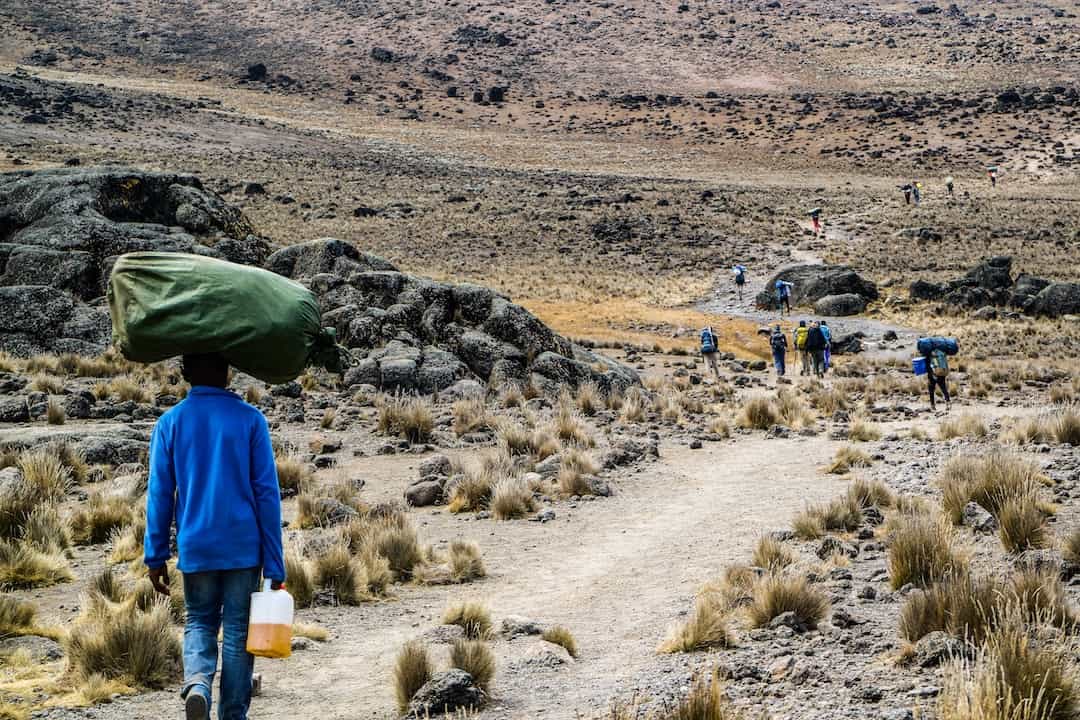
What you need to pack for Mount Kilimanjaro
Packing for a trekking tour of Kilimanjaro is serious business. Not only will you need to make sure you that you’re packing the right clothes and the right gear that could mean the difference between making it to the top safely and losing a toe from frostbite, but you also need to make sure that you have everything you need and still keep it down to a certain weight. This is because hiking porters are only allowed 33-pound loads.
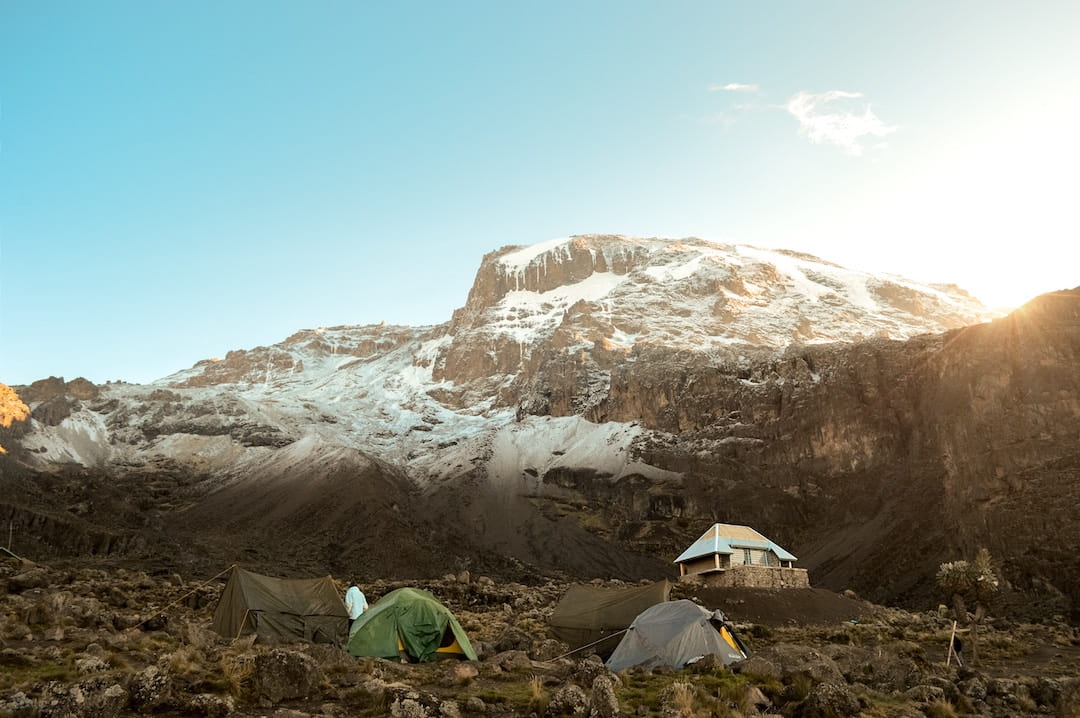
A few items to get you started will include the following:
Suggested items to pack:
- Broken in hiking boots: Do not purchase a brand new pair of hiking boots and only wear them on your Kilimanjaro expedition as this will result in terrible blisters and will make for an uncomfortable journey. A sturdy pair of hiking boots might be expensive, but they are worth the investment as they’re designed to last, protect your feet, and give your ankles and back better support.
- Gaiters: Worn over the ankles, gaiters are used to cover or protect the lower leg and prevent snow or rain falling into your shoes.
- Sunglasses: Ditch the fashion sunglasses and pack a pair of goggles or sunglasses with a UV filter to protect your eyes.
- Waterproof jacket: Possibly one of the most important items to pack, make sure you select the right jacket to suit the conditions you will be hiking in.
- Waterproof pants: Opt for a light pair that can be unzipped to reveal a shorter length that can be worn around the base of the mountain where it will be warmer.
- Insulated jacket: Some jackets are made to cater to both warm and cool weather with a waterproof shell so depending on your preference, a warm padded jacket should do the trick under your lighter waterproof jacket.
- A light fleece jacket: You won’t always need to wear a large waterproof jacket, so for those warmer moments during your trek, and light fleece jacket will keep you warm without feeling as if you are being weighed down by bulky clothing.
- Long sleeve tops in a light, moisture-wicking fabric: Under all of your layers, it is likely that you will sweat. To stay fresh, consider packing tops with moisture-wicking fabric to keep cool and stay fresh for longer.
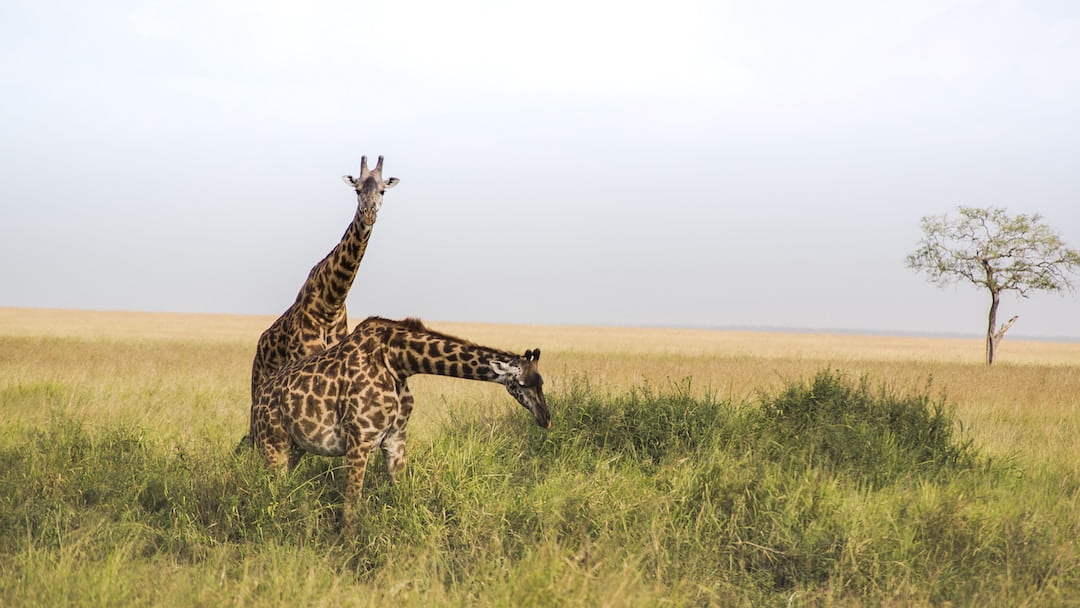
Frequently asked questions about hiking Mount Kilimanjaro
Do I need a permit?
Yes, you do need a Kilimanjaro National Park permit to hike Mount Kilimanjaro. However, permits, as well as camping and rescue fees, are typically included and taken care of in your hiking tour package.
Can I go without a guide?
By law, Kilimanjaro trekking trips must include at least one guide and porters for traveller safety. If you would like to do a more independent hike, you may opt for a tour without porters to carry your pack. However, a guide is still necessary.
Do I need a medical check?
Though not required by the government, tour operators highly recommend a medical check to make sure that you are fit for the climb and do not have health issues that could put your life at risk during the climb. Many tour operators will check your heart rate prior to the trip.
Do I need a visa?
American, Canadian, British and Australian citizens, as well as citizens of many European nations, may obtain a Tanzanian visa at the airport upon arrival.
What vaccinations do I need?
Vaccinations needed for travel to Tanzania include Hepatitis A, Hepatitis B, Meningococcal, Rabies, Typhoid and Yellow Fever. Antimalarial and antidiarrheal drugs are recommended.
Ready to reach new heights in Kilimanjaro? Take a look at the most popular trekking tours to Kilimanjaro right here.

